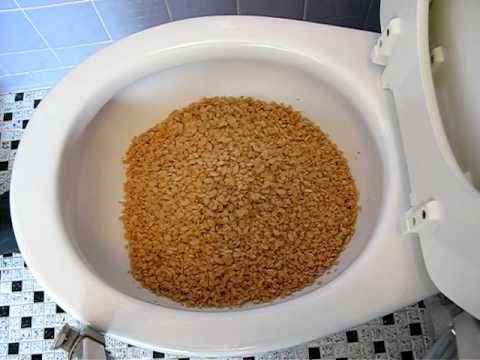Can One to Dispose of Food Waste in the Toilet?
Can One to Dispose of Food Waste in the Toilet?
Blog Article
This post listed below relating to Flushing Food Down the Toilet? is definitely engaging. Read it yourself and figure out what you think about it.

Introduction
Many people are often faced with the issue of what to do with food waste, particularly when it comes to leftovers or scraps. One usual question that develops is whether it's all right to flush food down the toilet. In this short article, we'll look into the reasons why people could take into consideration purging food, the consequences of doing so, and different techniques for appropriate disposal.
Reasons individuals might take into consideration purging food
Absence of awareness
Some individuals may not know the prospective harm brought on by flushing food down the bathroom. They might wrongly believe that it's a safe technique.
Convenience
Purging food down the toilet might look like a quick and very easy solution to taking care of undesirable scraps, particularly when there's no nearby trash can offered.
Laziness
In many cases, individuals may simply pick to flush food out of large negligence, without thinking about the effects of their activities.
Effects of flushing food down the commode
Environmental impact
Food waste that ends up in waterways can contribute to air pollution and damage aquatic ecological communities. Additionally, the water used to purge food can stress water sources.
Pipes problems
Purging food can lead to clogged up pipes and drains, causing expensive plumbing fixings and troubles.
Kinds of food that need to not be purged
Coarse foods
Foods with coarse textures such as celery or corn husks can obtain tangled in pipelines and trigger clogs.
Starchy foods
Starchy foods like pasta and rice can take in water and swell, causing blockages in pipelines.
Oils and fats
Greasy foods like bacon or cooking oils need to never ever be flushed down the toilet as they can strengthen and cause obstructions.
Correct disposal techniques for food waste
Utilizing a waste disposal unit
For homes equipped with waste disposal unit, food scraps can be ground up and purged through the pipes system. Nevertheless, not all foods are suitable for disposal in this way.
Recycling
Certain food product packaging products can be recycled, reducing waste and reducing ecological effect.
Composting
Composting is an environment-friendly way to dispose of food waste. Organic materials can be composted and used to enhance soil for horticulture.
The significance of proper waste monitoring
Decreasing ecological harm
Appropriate waste administration techniques, such as composting and recycling, aid minimize pollution and maintain natural deposits for future generations.
Securing pipes systems
By avoiding the method of flushing food down the toilet, home owners can protect against expensive pipes repairs and preserve the honesty of their plumbing systems.
Verdict
Finally, while it might be alluring to flush food down the bathroom for convenience, it is necessary to recognize the potential repercussions of this action. By taking on appropriate waste management methods and dealing with food waste sensibly, individuals can add to healthier plumbing systems and a cleaner setting for all.
FLUSH FOOD DOWN THE TOILET?
FLUSHING FOOD CAN CAUSE BLOCKED DRAINS IN YOUR HOME
All of the plumbing fixtures in your home are connected to the same sewer pipe outside of your home. This outdoor sewer pipe is responsible for transporting all the wastewater from your home to the Council sewer mains. Even small pieces of food that go down the kitchen sink can cause problems for your sewer. It should therefore be obvious that flushing larger bits of food, such as meat, risks a clog in either the toilet itself or the sewer pipes. Flushing greasy food is even more problematic because oil coagulates when it cools, coating the interior lining of your pipes.
THE TOILET IS NOT A BIN
Food isn’t the only thing that people shouldn’t be flushing down the toilet. People use the toilet to dispose of all kinds of things such as tampons, makeup wipes, dental floss, kitty litter and even underwear. Water goes to great lengths to educate residents about the high costs and stress placed on wastewater treatment systems simply from people flushing the wrong stuff down the toilet. It costs taxpayers millions of dollars each year, and homeowners thousands in blocked drain repairs.
FLUSHING FOOD IS A WASTE OF WATER
Flushing food is a waste of our most precious resource - water. In June this year Level 1 water restrictions were introduced to protect water supply from drought conditions. Much of New South Wales continues to be affected by prolonged drought with recent figures revealing up to 97 per cent of the state remains in drought. Depending on whether you have a single or dual flush toilet, every single flush uses between five and 11 litres of water. In the current climate this is a huge amount of water to be wasting on flushing food that should be placed in the bin (or better yet, the compost).
https://www.jabplumbingsolutions.com.au/blog/can-you-flush-food-down-the-toilet

Do you appreciate more info about Is it safe to flush food (especially rice) down the toilet?? Place feedback below. We'd be glad to find out your suggestions about this blog. We hope that you visit us again soon. Are you aware of someone else who is inquisitive about Think Twice Before Flushing Food Down Your Toilet? Do not hesitate to share it. Bless you for your time. Don't hesitate to come visit our site back soon.
Make An Appointment Report this page